Just like a runner who needs the right type of shoe to race in marathons or training, knowing what to wear on your feet is a must. When you’re paddleboarding either on flat or bumpy waters, knowing what to wear is not always a simple choice. Going barefoot or wearing neoprene boots are not only be the options, there seem to be lots of different choices to be had.

When it’s warmer, people find that going barefoot is the best option as it gives you the opportunity to use your toes to help balance and keep you upright. In Hawaii, it’s not so much a problem, but in other areas or countries that experience winter, you may want to think about keeping your feet covered to avoid frostbite. Keeping your feet dry is deal to stay warm, but as a SUP paddleboarder, you need to often launch from the beach and in the process getting your feet wet.
So what are your options to keep your feet warm and dry?
Bare Feet
Pros-Helps you to maintain balance on the board (when it’s warm and you can feel your toes!) / Free! / Ideal option for warmer weather paddling.
Cons – You feet will get wet and quickly become cold and numb on a chilly day which doesn’t make for the easiest or most enjoyable paddling / No protection when launching.
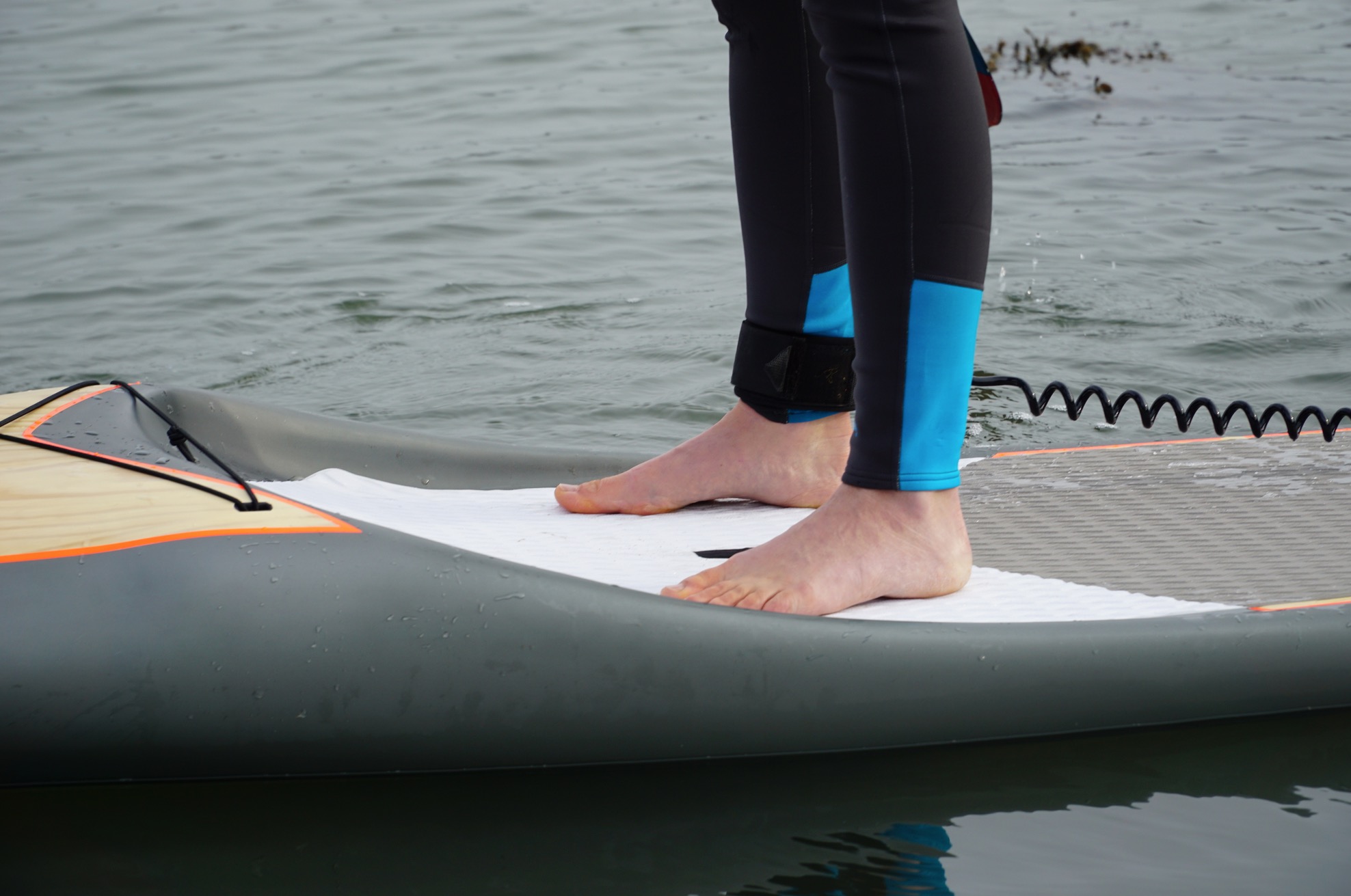
Neoprene Boots
Pros – Offers some warmth and feet protection / Still allows the use of toes to aid balance / Ideal for shorter length trips.
Cons – Feet will get cold if wet on longer paddles / They can get a bit stinky!!
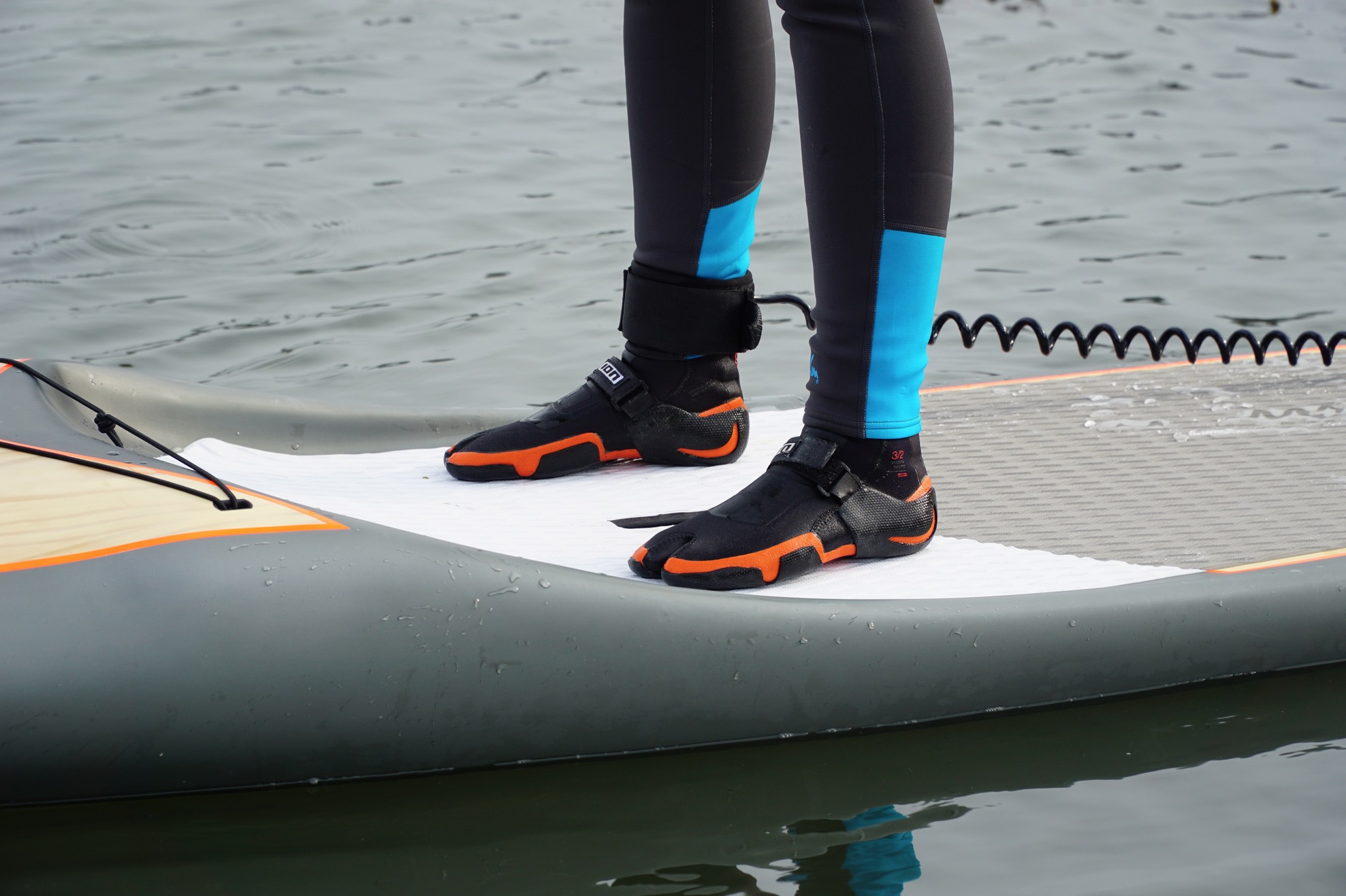
Trainers
Pros – Provides good protection when launching / Offers some warmth if they remain dry.
Cons – Not waterproof and therefore feet will become cold if wet / If not specialist water shoes with drainage holes they’ll become waterlogged / Thick soles can make it harder to balance.
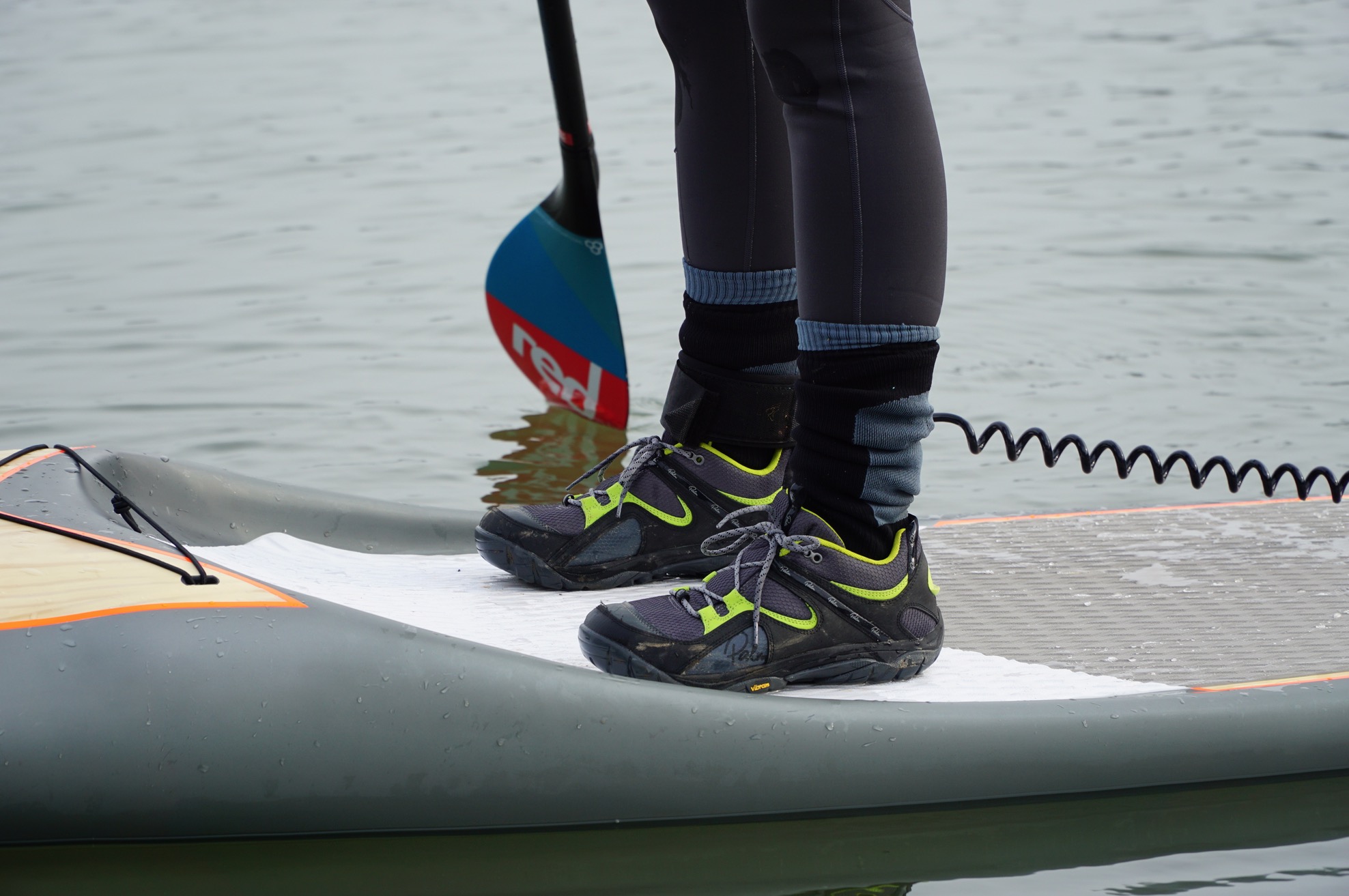
Waterproof socks
Pros – Keep your feet dry and therefore warm (as long as no holes!) / Can either be worn on their own or inside trainers / If a good tight fit will allow you to wade in above sock height and still keep your feet dry.
Cons – Not the cheapest socks on the market!! / Not very hardwearing and therefore can be easily damaged when worn their own.
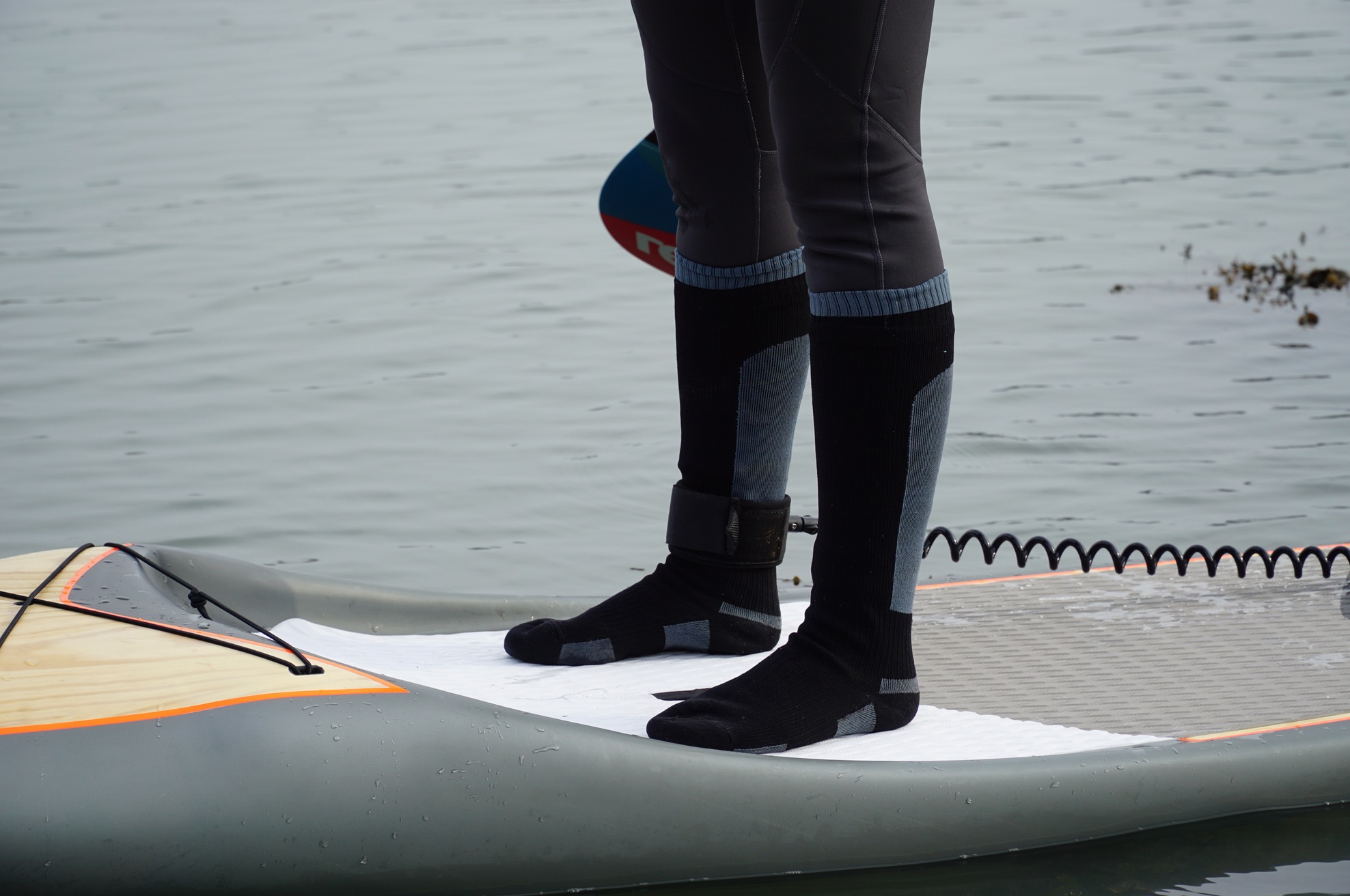
Flip Flops (Slippahs)
Pros – Ideal to protect your feet when launching / Small and easy to store on your board / Can by warn when paddling or removed / Ideal during summer.
Cons – Offers no warmth.
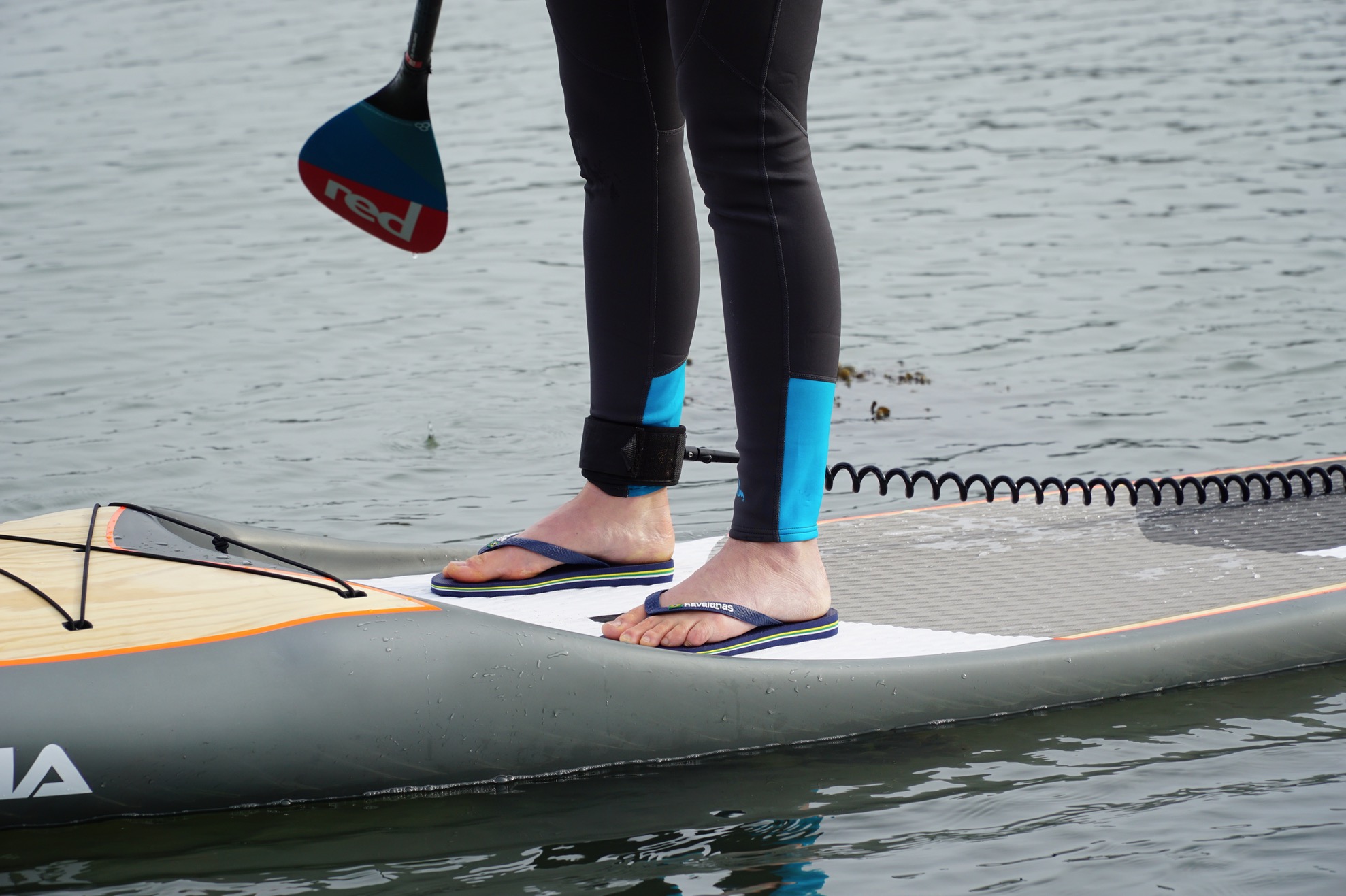
Plastic bags?
Pros – Cheap! / Works well either on their own or inside shoes / A good quick fix if you forget your normal footwear!
Cons – Not the most fashionable! / Can get a bit sweaty! / No good when you get over bag height!
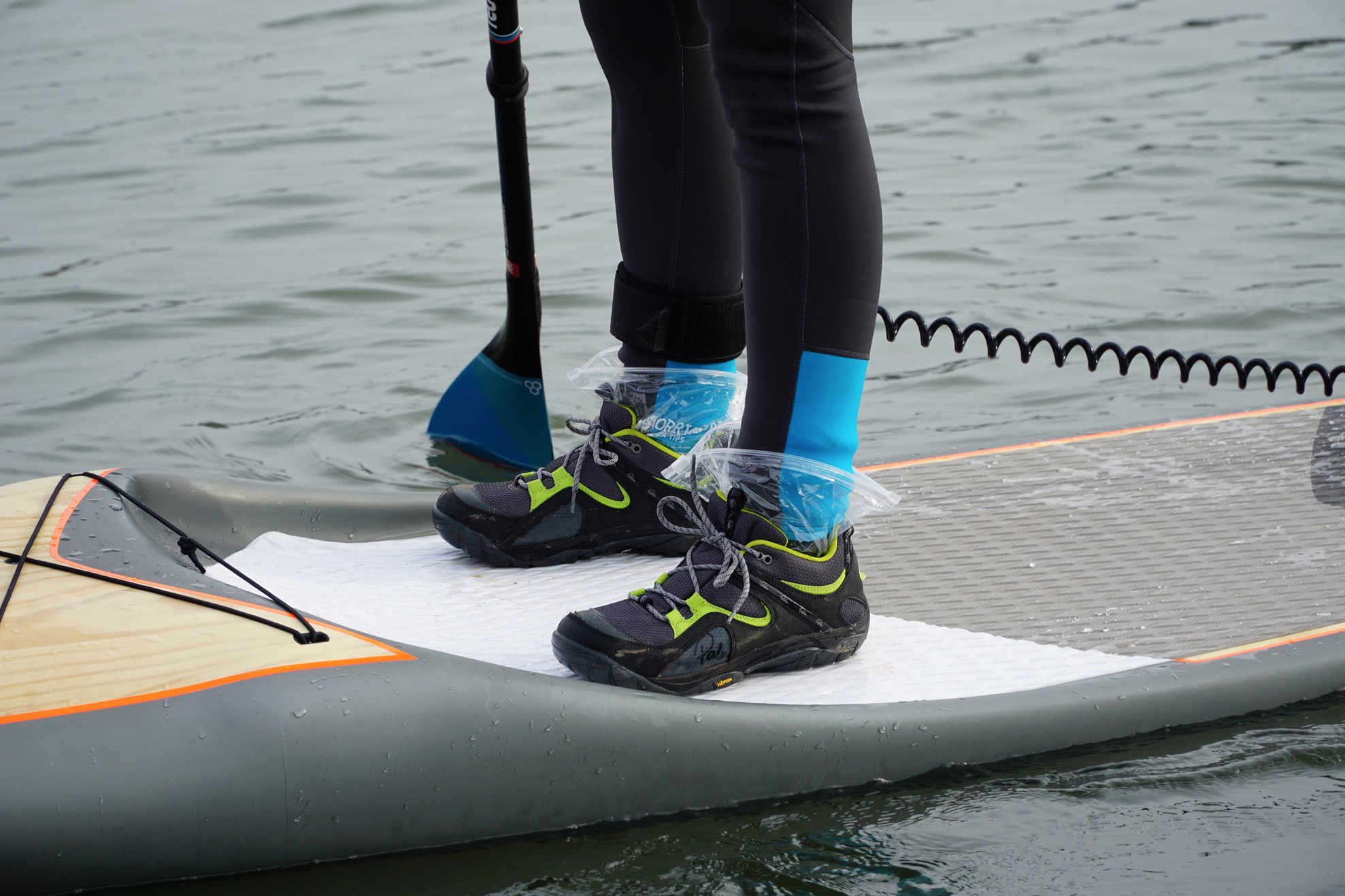
Wellies (Specialist rubber boots which you can seal onto a dry suit etc..)
Pros – Keeps your feet dry and protected when launching up to wellie height.
Cons – Unsafe to wear when paddling (boots will fill with water and become heavy if you fall in) WEARING WELLIES WHEN AFLOAT NOT TO BE RECOMMENDED – take off and store on board once afloat.
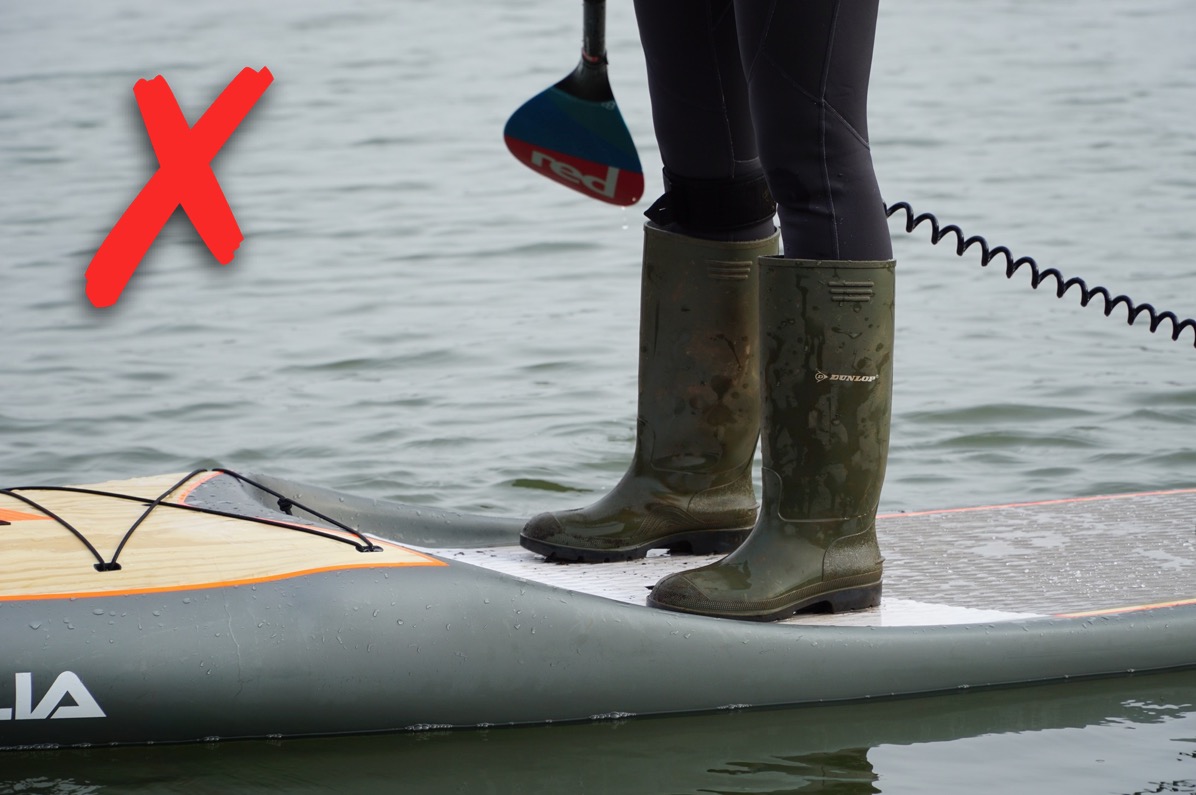
Other options to consider?
There really is no right or wrong when it comes to choosing what to wear on your feet when paddleboarding, it’s a matter of personal preference and the length of time you will be spending on the water and weather conditions. One thing to remember when choosing footwear is that your choice could possibly have an impact on your paddle height, consider adjusting your paddle accordingly before getting started. Also, safety is a factor at all times as you may want to keep in mind what happens if you fall. For instance, wellies may seem like a good options but if you fall they could fill with water causing you to sink.
Top tips for helping to keep your feet warm:
Take an iSUP – iSUPs are generally thicker than hard SUPs and therefore likely to keep your feet drier as your feet will be further from the water
Practice launching fin first – this allows you to launch in shallow and then turning around on your board, so you can launch without getting your feet wet
Keep moving your feet and wiggling your toes throughout your session to keep blood circulating and your feet warmer
Try your hardest to keep your feet dry for as long as possible (ideally the whole session!)
Start your session with warm dry feet if possible


Recent Comments